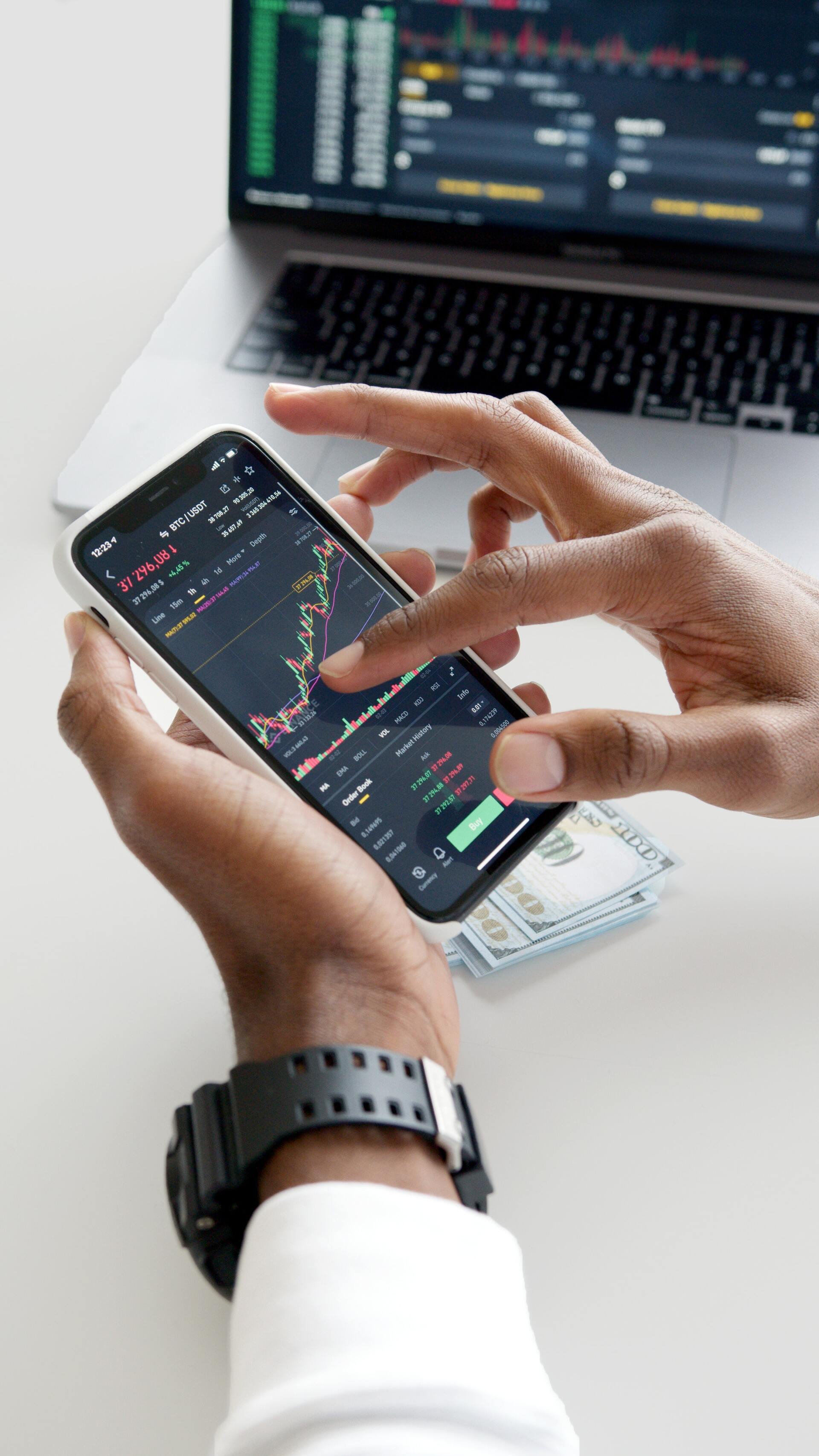Chapter 16
What is DeFi (Decentralized Finance)?
DeFi or Decentralized Finance is a brand-new approach on financial services that is focused on peer-to-peer payments made possible by blockchain technology. DeFi uses blockchain technology to enable "trust-less" banking, by passing conventional financial intermediaries like banks or brokers.
With DeFi, you can make transactions by entering into smart contracts and using secure digital wallets to access your assets.
The majority of activities offered by traditional banks using government-issued fiat currencies can be done by participants using cryptocurrency, including lending, borrowing, earning interest, trading goods, getting insurance, and more. DeFi services are usually faster, more affordable, and easier, and new benefits and features are constantly developed.
DeFi vs. centralized finance
The default financial environment in which the world currently runs is one of centralization, with payments, loans, and trading activity all going through intermediaries that are closely regulated locally. In the world of centralized finance, not everyone is given access to certain financial services or allowed to create a bank account. Consequently, DeFi has the potential to financially liberate billions of individuals worldwide who are currently denied access to banking services. Basically all you need to access these services is a smartphone. This is truly revolutionary and it breaks down barriers.
Let’s Take It Back!
How does DeFi work?
With DeFi, you can use a private digital wallet to gain access to your funds or assets. When you wish to transact, you can do so through smart contracts, which requires that both you and the other party accept a number of pre-set specified terms. Transactions on the blockchain are recorded in data-blocks and then verified by other users. The block is closed and encrypted if these verifiers agree on a transaction, and a new block is generated with details about the old block inside of it. All the data-blocks together form a chain so to speak, making it a Blockchain.
DeFi use cases
DeFi is much more than an up-and-coming ecosystem of initiatives. It's a revolution that offers a parallel financial system that rivals centralized services in terms of accessibility, resiliency, and transparency and grants users more liberty, independence, control, privacy and data ownership.
Let's look at some use cases:
01 DAOs.
Decentralized Autonomous Organizations(DAOs).
See chapter 9 of our free guide.
02 P2P (Peer to Peer) lending and borrowing.
Through peer-to-peer borrowing/lending, people can borrow-lend money from/to other people without going through a financial institution.
03 Prediction market.
In blockchain-based prediction markets that tap into the wisdom of the crowd, users can vote and swap funds on the outcome of events.
04 Insurance.
Offers insurance powered by blockchain that replaces the use of traditional insurance policies. Secondly it offers insurance built on the blockchain that minimizes the risks associated to DeFi activity. This protects individuals who invest in cryptocurrencies, for instance, from issues like smart contract exploitation and DeFi protocol attacks.
05 Analytics & Risk Management.
Helps in data analysis for risk estimation and mitigation.
06 Infrastructure development.
Offers the tools to develop, integrate, and compile blockchain solutions.
07 Payment solutions.
Offers alternatives to old payment systems that are quicker, safer, and more transparent.
08 Compliance and KYT (instead of KYC).
Offers Know Your Transaction (KYT) instead of Know Your Customer (KYC) that tracks transaction behaviors instead of user identity. KYT focuses on the transactions themselves. For instance, are there unusually high amounts of transactions being made? Is there an effort to cover up or avoid attracting attention by consistently transacting at or below a given level?
09 Digital Identity.
Offers portable self-sovereign identity that is secure and private.
10 Asset Management.
Allows to buy, sell, transfer, stake and earn interest on digital assets.
11 Decentralized exchange.
One of the more significant uses of DeFi, decentralized exchanges can offer the trading activity inside the ecosystem new meaning.They cover a wide range of activities, including asset and derivative trading.There is zero chance of market or asset manipulation because there is no centralized authority in a dominant position. Additionally, thanks to the blockchain's digital transformation, decentralized exchanges provide lower exchange fees, quicker settlement, and total ownership over their digital assets.
12 Gaming and Esports.
DeFi allows game developers to use coins to integrate the newest incentive or reward models. In fact, because users are more tech-savvy and receptive to modern technologies, gaming and eSports are set to become one of the primary marketplaces.
13 Tokenization.
One of the main components of the DeFi ecosystem is asset tokenization. Tokenization is the process of generating, issuing, and managing digital assets on a blockchain network. Any type of (Traditional) asset might be tokenized and kept on a blockchain, effectively introducing a new economic system.
Is DeFi safe to use?
What is safe? That often depends as well on someone's point of view, expectations and other variables. In the traditional world of finance the risks involved with using services and products can generally be resolved with intermediaries, the companies that offer these services or products, law enforcement, watchdogs or courts. In DeFi you need to take other risks into account and learn ways to navigate safely.
Let’s zoom in to some of the risks involved.
Smart Contract risks
If you accidentally send money to an incorrect address or through an
incorrect network, the transaction is irreversible. Oracles are another technology risk for smart contracts. Many smart contracts that depend on external data, such as price feeds, should be executed through oracles. However, the intended execution of a smart contract is put at risk when those oracles fail or are compromised by malicious behavior.
Exploits & vulnerabilities
There may be flaws with smart contracts. Because DeFi relies on publicly accessible code, technically savvy individuals can spot bugs in the code and take advantage of them. While some defects are accidentally discovered, others are the consequence of malicious attempts.You need to always be aware of the potential technological risks when engaging in the DeFi ecosystem.
Market risks
The price of cryptocurrencies can suddenly and unexpectedly rise or fall due to a variety of circumstances, making the market for digital assets particularly volatile.
Red Flags, Scams & Rug Pulls
When only a few of wallets control almost half of a token's available supply, it is a huge warning sign. You can view the distribution of tokens on a blockchain explorer (such as
Etherscan
for Ethereum).
An exit scam (also known as a rug pull) occurs when developers launch a cryptocurrency project with bad intentions. Initially they operate as a legit project and after a while the developers run off with investors' money and abandon it.
Impermanent loss
Impermanent loss is a common risk for liquidity providers that occurs when a liquidity provider experiences a brief loss of capital due to volatility in a trading pair. This causes an uneven market and much lower gains than if the liquidity provider had simply held their assets.
"Bitcoin is very ideologically fulfilling,
it's my form of political activism, but it's also a huge business opportunity."
- Erik Voorhees
What People Say About Us

“Great guide. I always wanted to learn this!”
John Smit
“Love this free service. Can’t wait to read the next blogs about crypto insides!”
Mary Brown
“Not sure why I didn't discovered this website earlier. It’s super!”
Robert Wilson
Helping people, entrepreneurs & businesses to bridge the gap between the internet of today towards the revolutionary Web4 movement.
#TakeItBack
Support us
Support the free and independent movement!
with 5 Euro / Dollar you already help us enormously!
Bitcoin wallet:
bc1qtl0yyayrdy2p74xf52ts75tw2tl0aleehhtfjl
Monero wallet:
44gKNgXYMEfFFBR4J1ySmj161zYpMZdGZPH1D2mDnYHTPXLmv83d58CbF6uNWpDq1Vdgw1NLwkJNkR1NEmqmC5xa6ZzRehG
Ethereum wallet:
takeitback.eth







